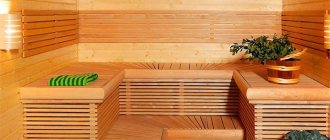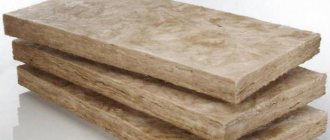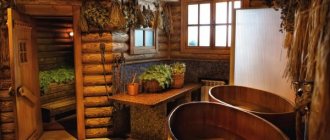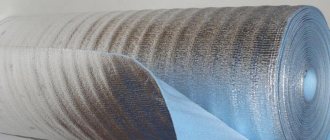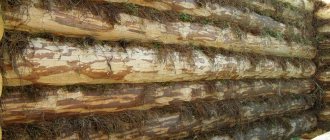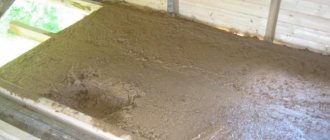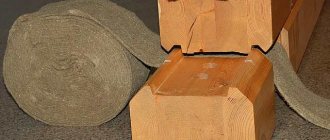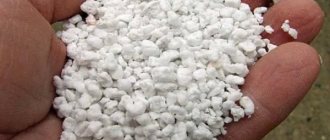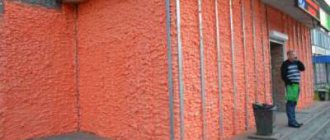Izolon is a cellular, closed-type polyethylene foam. Effective thermal insulation with a high degree of elasticity. You can often find Foil Isolon with a thin layer of aluminum foil. Modern material of the 21st century has found wide application on construction sites, in the automotive industry, and in any type of climate control equipment.
In the 21st century, the world has come to know many artificial materials. Every year the modern market presents a huge number of different thermal insulation materials. To make it easier for the consumer to make a choice and not make a mistake with the quality of their next purchase, we will tell you about the material that has won special respect among users.
The material turned out to be so versatile that it is widely used as insulation, for providing effective sound insulation, and even as a vapor insulator, the material has no equal.
Description of material
Isolon thermal insulation consists of artificially foamed polyethylene, which has the form of small cells or pores. Increased thermal insulation characteristics are achieved thanks to the porous structure. Using it, various surfaces and entire structures are insulated and waterproofed. The finished material can be in the form of a sheet, tape, block or roll.
The main scope of application is hydro, sound and thermal insulation. It is also used in household tasks, as it has better characteristics compared to similar products. The special structure makes isolon a durable and wear-resistant material.
It is often used in conjunction with other insulators. For example, if the task is thermal insulation of the surface, it is combined with polystyrene foam or expanded polystyrene. This “pie” allows for high-quality insulation of walls, interfloor ceilings and loggias. It also serves as an insulating coating when screeding floors. It is also used in car production - it insulates bodies and protects metal parts from corrosion.
Composition and technical characteristics
To make isolon, polyethylene is foamed, which explains its structure - air pores closed in the synthetic “body”. Despite its elasticity, the material is quite soft, so it is convenient when working with geometrically complex surfaces. When making isolon, a thin foil layer of aluminum is made, the task of which is to reflect heat back into the room. As a result, it is possible to reduce the thickness of the insulation layer itself (the usual thickness for other products is 50-100 mm). The initial thickness of isolon is 2 mm, but if necessary it is increased to 100 mm. It all depends on the area in which it is used. For example, to insulate a balcony, you will need insulation 20-30 mm thick.
Depending on the production method, there are two types of isolon: NPE and PPE (non-crosslinked polyethylene foam and crosslinked). They will be discussed in more detail below, and the technical characteristics of both options are in the table below.
| Index | PPE | NPE |
| Density | 33 kg/m3 | 24 – 45 kg/m3 |
| Operating temperature range | -60 to +75 degrees | -80 to +80 degrees |
| Thermal conductivity | 66 W/mK | 0.040 W/mK |
| Water absorption | 0,01 | 0,01 |
| Vapor permeability | 0.001 mg/(m*h*Pa) | 0.001 mg/(m*h*Pa) |
| Sound absorption | About 60% at 6000 Hz | from 3 to 13% |
Main varieties
Izolon PPE
Thermal insulation Izolon, depending on the structure, is divided into several types.
Izolon PPE
The cross-linked material is made by joining chains of carbon and hydrogen into a 3D molecular network. It is difficult to break bonds, so the main characteristic of Izolon PPE is increased strength. Cross-linked insulation has different markings:
- 500 and 500 L. Produced on the basis of polyethylene, physically combined in a vertical oven. The structure of the sample is ligation in the transverse direction;
- 500 HP. Material with a similar structure, manufactured in horizontal kilns;
- 500-300. The production process involves foaming the polymer and adding chemical elements to it in horizontal furnaces.
Air bubbles remain in the composition of PPE, so it is light and characterized by low density.
Izolon NPE
Izolon NPE
is an extruded polyethylene foam with a non-crosslinked structure. The polymers acquire a foam state after the introduction of a blowing agent, which ensures closed pores with an even structure and a density of 26 kg/m3. The thermal conductivity of NPE is 0.040 W/m*K - 1 cm of material can replace 1.4 cm of Penoplex insulation, 16 cm of brickwork and 5 cm of beams.
Features of uncrosslinked Izolon include:
- high-quality steam and moisture protection - closed cells prevent water absorption along the entire perimeter of the sheet;
- providing sound insulation;
- environmental safety - fren gas is not used for foaming;
- compatibility with all types of building materials;
- durability and resistance to rotting thanks to the polymers in the composition.
NPE is easy to cut and lay in a special crate.
Foil
Foil insulation
A foil film 14 microns thick is applied to the material on one or both sides. The coating helps reflect 97% of the heat and therefore the thermal insulation works like a thermos. Any room can be insulated with foil isolon due to its properties:
- vapor permeability of 0.031 - 0.04 mg/m*h*Pa - walls and finishes do not become damp or moldy;
- minimal moisture absorption - moisture does not penetrate into the material and condensation does not form;
- sound insulation characteristics - does not absorb sounds from 32 dB;
- light weight - ensures quick cutting and no reinforcement during installation.
Foil-coated Izolon can be used indoors.
Specifics of Izolon
Izolon is produced by foaming polyethylene with small cells and closed pores
Izolon based on fine-cell polyethylene foam has high thermal insulation properties and low weight. Some modifications are made with single- or double-sided lamination with aluminum foil. The thickness of the coating is 14 microns and provides waterproofness as well as reflective properties.
The material also has a reinforced frame in the form of a propylene mesh. The basis of Isolon is self-adhesive or glueless. There are combined varieties with foil and adhesive base on sale. To prevent the sheets from sticking together during transportation, a protective film is applied to the adhesive surface.
Examples
The following models of foil insulation can be found on sale:
- TFP-3.5:
| Specifications | Values |
| The basis | Fiberglass |
| Upper layer | Aluminium foil |
| Waterproof at a pressure of 100 Pa for 72 hours | Absolute |
| Roll dimensions | 10 by 1 m |
| Price | 207 rubles |
TFP-3.5 has the highest performance properties and cost in comparison with other samples of foil insulation
- HMAP-3.5:
| Specifications | Values |
| The basis | Fiberglass |
| Upper layer | Metallized film |
| Waterproof at a pressure of 100 Pa for 72 hours | Absolute |
| Roll dimensions | 10 by 1 m |
| Price | 121 ruble |
The KhMAP-3.5 model is simplified by using a metal coating instead of a foil coating, due to which it costs less
Sources of cold
Even if during construction you spared no expense on thermal insulation of the roof and foundation, there are other areas through which heat can escape:
- First of all, these are entrance doors and windows;
- Balcony, if available.
- Walls - in the event that the builders “scraped” and did not treat the work process with due professionalism.
Minimizing heat loss and maintaining comfort in your home directly depends on high-quality insulation. In addition, good thermal insulation will significantly save your money on heating costs, since the current price of energy is quite high.
Foil material is suitable for baths and saunas, retains heat perfectly and maintains the required temperature
Types and characteristics of thermal insulation Izolon
Foamed polyethylene Izolon with and without foil.
Izolon is a brand that produces polymer materials for insulation, noise and sound insulation with a closed-cell structure. Product line:
- Isolon 100 – non-crosslinked polyethylene foam;
- Isolon 300 – chemically cross-linked polyethylene foam;
- Isolon 500 – physically cross-linked polyolefin foam;
- adhesive tapes;
- reflective insulation - foil foamed polyethylene or metallized lavsan film.
The scope of application of the material is very wide: from civil engineering to manufacturing. This is facilitated by high performance. Isolon insulation, characteristics:
- density from 25 to 100 kg/m. cube;
- thermal conductivity – 0.037 W/m*C;
- does not allow steam and water to pass through;
- foil materials absorb 97% of IR radiation.
Some items can withstand heating up to 100 degrees without changing their physical and chemical properties. The service life declared by the manufacturer is at least 30 years. All types of polyethylene foam absorb sound and vibration waves well.
The choice of insulation for a ventilation facade depends only on the material from which the walls are built. For wood, materials that allow steam to pass through are used; for concrete, anything is suitable.
You will find information about insulating hives with foam plastic here.
How does insulation work?
Heat is transferred through infrared rays, invisible to the human eye, but capable of heating opaque objects. In addition, this radiation can also be reflected from mirror surfaces.
Izolon brand insulation is based on this principle. Being located between two walls, or between the finishing and the outer wall, isolon reflects infrared rays back into the room, radically reducing heat loss, and therefore increasing the efficiency of heating systems and reducing the cost of maintaining the desired temperature in the room.
Preparation before installation
Nowadays it is popular to lay insulation with a thickness of no more than 10 mm on the floor. Izolon can be placed in any room to avoid heat loss. But first you need to remove the old flooring and remove all debris.
Laying isolon insulation can be done independently without much difficulty
After this, you should inspect the underlying structure, where there should be no damaged screed. It is best to pour new cement mortar. In addition, it is necessary to check the reliability of the butt seams. Any holes on them must be sealed with foam. Before laying isolon, do not forget about waterproofing the base. To do this, the floor is covered with a primer, and when it dries, polyethylene must be laid on top of it. It is recommended to secure the film with tape.
Advantages and disadvantages
Do-it-yourself insulation of a bathhouse with isolon: the method of specialists
This material is made on the basis of foamed polyethylene. It has different thickness and appearance of the coating. It also reflects the heat emanating from the walls.
Izolon is resistant to sudden temperature changes. It retains its appearance and properties at temperatures from -85 to +125 C.
the material has a different texture: uniform or cross-linked. Choose any option for insulating the bathhouse.
The advantages of isolon are:
- heat retention up to 90%;
- minimal reduction in steam room area;
- it is possible to independently insulate the walls of the steam room with this material;
- Isolon is resistant to moisture;
- affordable cost of material;
- no corrosion;
- When the material heats up, it does not produce harmful substances.
But this material also has disadvantages:
- sizing of joints is required;
- there is exposure to mechanical damage.
It is best to choose roll insulation for a bathhouse. It is much more convenient to work with him.
Use of cross-linked polyethylene foam
Thanks to its sanitary and epidemiological qualities and unique technical properties, the range of applications of this material is constantly expanding. The installation of such a product is often used in the engineering industry to insulate heat-reflecting screens, refrigerators, isothermal cabinets and climate control equipment. Isolon is also in demand in construction, where it is used for the following purposes:
- waterproofing of basements and foundations;
- protection of communications;
- heat and vapor insulation of rooms with high humidity (bathrooms, saunas);
- insulation and waterproofing of partitions, roofs, walls, ceilings, ceilings and floors.
This thermal insulation material is often used in the automotive industry. This product is used to cover the interior for sound insulation and also to reduce vibrations. Among other things, it is used as a sealant, a protective element against corrosion, and a damping gasket.
The material in question is used in medicine to make elastic products for specialized purposes, thermal blankets, insoles, as well as orthopedic products.
In addition, isolon is used to create packaging materials. They are used for the safe transportation of products and storage of various products for household and industrial purposes.
The foiled isolon material has increased moisture resistance.
A variety of things for tourism and sports are made from this universal material. These mainly include gloves, mats, life jackets, punching bags, mats, helmets and swimming boards.
Amateurish technology
The origins of balcony disasters originate in the following statements:
- “for normal high-quality insulation of a loggia, in order for it to be as warm as in an apartment, ordinary insulation with a thickness of 10 millimeters is enough
“; - using expanded polystyrene is “ the height of stupidity and inefficiency
,” since isolon “
has higher thermophysical characteristics
.”
Based on these stupid tips, people are sold a miracle technology for insulating balconies and loggias, which is built according to the following scheme:
The author of the above statements and thermal insulation technology is a person who can speak confidently on camera, but does not understand construction and repairs.
We called his technology
Amateurish
. After all, any competent builder knows that 1 cm of isolon is extremely insufficient for insulating balconies and loggias. Further in the text we will confirm our words.
REMINDER. Expanded polystyrene (foam) or mineral wool are often used for thermal insulation of building structures. Both of these materials retain heat approximately equally, but the main thing is that they are laid in layers not 1 cm thick, but on average 10 cm thick. Perhaps this is because they are really much worse than the super insulation isolon and are not capable of protecting the balcony from frost with the thickness of a finger? But is this really so?
Argument No. 2. Super insulation is a myth
The first indicator of thermal efficiency - the ability of a material to retain heat - is the thermal conductivity coefficient, which is denoted by the letter "?" – lambda.
? (W/m°C) is the amount of heat in watts (W) passing through a layer of material 1 m (meter) thick if the temperature difference between its opposing surfaces is 1 °C (degree Celsius).
- How ? The smaller the better the insulator.
- ? depends on the nature of the material and does not depend on its thickness. Coefficient of thermal conductivity ? is a laboratory value that is measured on samples of the same size.
Place two frying pans on the fire - one with cast iron and one with plastic handles. Soon the handle of the first frying pan will become scalding hot, and the handle of the second will remain cold. This is a result of the fact that metal has a much higher thermal conductivity coefficient than plastic.
Let's compare the lambdas of several popular insulation materials. Data about them can be found on the websites of thermal insulation manufacturers, as well as in regulatory documents (we took higher values from SP 50.13330.2012):
- Izolon (foamed polyethylene) – 0.036-0.05;
- EPPS – extruded polystyrene foam (TechnoNIKOL) – 0.030-0.034;
- EPS – expanded polystyrene, polystyrene foam (GOST 15588.2014) – 0.035-0.059;
- Stone wool (Rockwool) – 0.035-0.048.
CONCLUSION: Coefficients? all materials are from approximately the same range. Statement that isolon “ has higher thermophysical characteristics
” – illiterate.
Color options and cost
Unlike its construction counterpart, izolon for handicrafts has several basic shades.
For example, you can purchase roll products from suppliers in the following colors:
- white and black;
- turquoise and sky blue;
- emerald and mint;
- orange and yellow;
- coral and red;
- warm pink;
- peach and powdery;
- muted blue and deep blue;
- cold turquoise and silver-gray;
- olive-gray and rich green;
- lilac and purple;
- chocolate and cocoa tint.
However, the price of each shade of PPE material may differ. For example, white isolon is considered a bestseller: the cost per square meter of such material is 89 rubles for a thickness of 2 mm and 99 rubles for a thickness of 3 mm.
Options with an adhesive layer are more expensive: say, a meter of white roll material 2 mm thick today costs 143 rubles, with a thickness of 3 mm the cost is 175 rubles.
As for the price for material of 8 mm thickness, today it is 255 rubles per 1 m2. A meter of isolon for making flowers 10 mm thick in white costs 349 rubles.
The price of non-ferrous material averages from 115 to 147 rubles per 1m2. In this case, as a rule, the thicker the raw material, the larger it is.
Methods for laying isolon
When insulating the walls of a house from the inside with the help of such a reflective heat-insulating material, it can be laid both between two walls and between the outer wall and the internal finishing surface.
In both cases, there will be a reflection of not only the heat coming from inside the room, but also the cold coming from outside. This is achieved by foiling the insulation, which can be one-sided or two-sided.
When choosing an option for installing isolon, it is necessary to take into account the architectural features of the building design.
When working with isonol, it must be remembered that the greatest effect from this heat-insulating material is obtained if there is an air cushion between the insulation and the wall. It should not be more than 15-20 mm.
To create an air cushion, you need to stuff, in a checkerboard pattern, slats 1 to 1.5 meters long.
The distance between them should be no more than 1 meter.
The insulation should be attached to them using small nails or a furniture stapler. The joints between pieces of isolon must be carefully taped with an aluminum stapler.
After the insulation is properly strengthened, slats are nailed onto it, onto which the finishing layer of the inner wall will then be mounted.
Isolon laid in this way will prevent heat loss.
The air gaps created will promote thermal reflection. They will send cold air back outside, and warm air into the house.
To achieve maximum effect, it is better to give preference to isonol foiled on both sides.
Features of using foil insulation
The use of materials with foil for insulation depends on a couple of indicators: the properties of a particular heat insulator and the place where it will be used. In general, with the help of such thermal insulation, floor structures are insulated, the heat transfer of heating radiators is increased, and air ducts and pipelines are finished. Thermal insulation of entrance doors of verandas, loggias, porches and balconies also gives excellent results
When installing foil-type insulation, you need to acquire all the necessary tools for the job:
- Construction stapler.
- Small carnations with large heads.
- Nail puller and hammer.
- Construction tape with foil coating.
- Direct insulation with foil.
The most common mistake many builders make is incorrect installation of the material with the foil surface facing outward. Due to the fact that the foil is a reflector, it is designed to return heat to the room. But if you place the insulating material on the wrong side, you won’t be able to achieve this effect.
When laying foil insulation , it is recommended to enclose it in a wood sheathing.
Slabs, rolls or sheets of material must not be laid overlapping. They must be installed strictly on the same plane, secured with nails or construction staples.
Material with an adhesive surface does not need to be secured with additional fasteners, but to increase service life it is still better to use small nails. In the absence of an adhesive coating, rubber or acrylic adhesive can be used to fix the material on the surface.
After installing and securing all layers of heat insulation, the joints between them must be treated with foil tape. This completes the installation.
When installing a heat insulator on vertical surfaces that have mold, wallpaper or dirt on them, they must first be cleaned, otherwise the fixation will be very unreliable, and the material will simply fall off over time. In addition, it is recommended to treat the surface with antiseptic agents.
Easy to use and very high-quality foil insulation will save money and keep your home cozy and warm.
Advantages and disadvantages
Isolon insulation has many advantages, which makes it so popular:
- safe, does not have harmful effects on human health;
- due to low water absorption and vapor permeability, the insulation can be used without a waterproofing layer;
- elastic, therefore easy to install in difficult places. At the same time, it is elastic, so it easily returns to its original shape after dismantling and can be reused;
- precipitation and ultraviolet radiation are not harmful to isolon, therefore it is suitable for outdoor work;
- Izolon is one of the best insulation materials for walls. Example: 10 mm of insulation = 15 cm of brickwork, 20 mm of mineral wool or 5 cm of wood. Heating costs are reduced by almost three times;
- does not put a load on the structures being processed, as it weighs little;
- fireproof;
- service life reaches 80 years;
- During manufacturing, the material is not only covered with foil or metallized film, but also embossed and painted;
- Isolon is easy to use. It is easy to cut and attach to a surface, allowing for a self-adhesive base. A stapler, small nails, self-tapping screws or silicone glue can also be used for fixation;
- waste raw materials are reused;
- aggressive chemicals and biological destroyers do not affect the material;
- wide choice in terms of sizes, density, thickness.
There are isolona and disadvantages, but there are far fewer of them:
- relatively high price;
- the thin aluminum layer is easy to damage, so you should work with the material carefully. The same applies to its transportation;
- Isolon is not plastered, not covered with wallpaper and other finishing materials that can “load” it, which can lead to breakage of the insulation.
Note! For any work with the material, for example, if you need to insulate the floor in a wooden house using isolon, you will need at least basic skills in construction, otherwise there is a chance of damaging it. Damaged insulation will no longer be 100% effective.
Advantages and disadvantages
The porous structure with cross-linked molecules provides the following properties of the Izolon material:
- Excellent ability to retain heat and sounds. A polymer with a thickness of 1 cm in terms of thermal insulation properties corresponds to 15 cm of brickwork or 5 cm of solid pine timber; slightly superior to polystyrene foam and mineral wool (they will need 1.5 cm).
Foamiran is a decorative variety of PPE Source shopify.com
- High level of waterproofing. Thanks to the closed pores filled with air, the material practically does not absorb moisture and remains vapor-tight.
- High inertness in contact with oil and petroleum products, with chemical compounds; Izolon is compatible with most building materials.
- Impressive service life: manufacturers talk about 80-90 years without loss of performance properties.
- Health safety. The material does not emit substances that are hazardous to health or cause allergies, does not rot and does not become a haven for microorganisms and fungi.
Builders note the following advantages of Izolon:
- Elastic and lightweight insulation makes installation simple and quick. It is easy to process - just a sharp knife is enough to cut the workpieces to the desired size.
- Reasonable price and no waste make it an economical insulation option.
- The polymer is resistant to atmospheric factors and solar ultraviolet radiation, so it is used for facade (external) insulation.
Isolon blocks serve as a reliable shock absorber Source prom.st
See also: Catalog of companies that specialize in home insulation
The following features of foil insulation can turn into disadvantages:
- Low strength. It is also typical for other insulators of this class: any of them is easy to pierce, so care is required during installation.
- Foil materials require a ventilation gap of 1-2 cm; this helps to avoid the formation of condensation, but at the same time increases the cost of insulation.
- With constant high humidity, the aluminum coating begins to corrode, and over time the thermal insulation ceases to perform its functions.
Material composition
Izolon is based on foamed polyethylene, having a thickness of 2 to 100 millimeters. At the same time, isolated air cells make this material an extremely weak conductor of heat, which makes it possible to insulate the room even at this expense. With sufficient thickness, of course. The foam base is covered on top with aluminum foil, which can be located on one or both sides of the material.
The material can also be used when insulating an external wall from the outside, located between the wall structure itself and the external decoration in the case of using curtain panels. In this case, the heat from the wall in the form of the same infrared radiation does not escape into the external environment. The proportion of reflected heat is very high, approaching 98 percent.
Specifications
- Material density - 19-200 kilograms per cubic meter;
- Sound absorption – up to 68 percent;
- Operating temperature from -80 to +80 degrees Celsius;
- Water absorption – up to 1 percent.
The last parameter means the material’s high resistance to humid air and water, which greatly expands its scope of application. This area, by the way, is really very wide: insulation and soundproofing of walls in apartments and private houses, floors (including self-leveling ones), interfloor ceilings, balcony structures, as well as non-residential premises. The material exhibits its properties well when insulating wet rooms with large temperature differences, such as baths. Finally, the material is used for pipe insulation, the production of workwear, as well as the manufacture of climate control and refrigeration equipment, but we will not touch on this.
Approximate cost (in Russia)
There are various types of Folgoizolon sold on the market, the price of which depends on its parameters - the thickness of polyethylene foam, reflective film made of aluminum foil, manufacturing technology, the cost of some brands:
- Folgoizolon SRF-0.1-200 is a corrugated polyethylene foam with a density of 200 kg/m2, on one side of which a fiberglass coating is applied, and on the other, aluminum foil 100 microns thick, its approximate price is 170 rubles. per m2. Insulation with a thinner foil layer of the SRF 0.05-200 brand costs 140 rubles. per m2, the specified Folgoizol SRF is sold in rolls 1 m wide and 20 m long.
- The price of roll materials is determined by the characteristics of Folgoizol, the main of which are the thickness of the aluminum foil coating and polyethylene foam, the approximate cost depending on the thickness for Folgoizol for a bath is as follows: 2 mm - 55 rubles, 3 mm - 60 rubles, 5 mm - 70 rub., 8 mm - 80 rub., 10 mm - 90 rub. per square meter when purchased in rolls of 50 m2.
- Self-adhesive Folgoizolon in rolls is more expensive; its length and price for the above standard sizes and thicknesses from 2 to 10 mm range from 100 to 200 rubles. per m2.
Price listFoil insulation Izolon. Excellent insulation for the home Watch this video on YouTube
Folgoizolon is one of the many brands of insulation based on polyethylene foam widely represented on the domestic market, which has earned positive reviews from consumers; its use is advisable as an auxiliary insulation to reflect the infrared spectrum of thermal radiation, as well as in places where the thickness of the layer plays a significant role. Most often, the material is used on floors as a heat-reflecting substrate under laminate, boards, water heating pipelines or electrical wiring of heaters for heated floors.
Choice of insulation
If you decide to insulate your home yourself, you will have to make several decisions:
- Which structures require insulation?
- The better to insulate each of them.
- Can you handle this yourself?
- How much money are you willing to spend on this?
Saving wisely is not a shame. Therefore, we recommend turning your attention to the new generation of insulation - foil Izolon. Due to its high reflectivity and low emissivity, Izolon will allow you to get the maximum effect from the thermal insulation of buildings.
By insulating with Izolon, you save not only money by reducing the thickness of the insulation, but also living space. This is important if you are the “lucky” owner of a small apartment with low ceilings and can only be insulated from the inside. The cost of Izolon, in comparison with traditional insulation, is an ideal combination of price and quality.
For your information! Do not forget that foil Izolon has a very low coefficient of vapor permeability and water absorption. That is why it does not require the use of additional vapor-hydroprotective films to perform thermal insulation functions.
How much does isolon cost - review of prices per square meter
Izolon is a fairly affordable material , especially if you calculate the consumption and estimate the characteristics of other materials. Despite the apparent high cost, it will still justify the costs over time.
Here is the cost of the material as of autumn 2020 :
- an isolon block 5 cm thick and 1 m² in area will cost about a thousand rubles per piece;
- Isolon 500, sheet, 1 m², 5 cm thick – 1 thousand rubles;
- isolon 500, roll 60 m, width one and a half meters - 13 thousand rubles;
- the price of a 50-meter roll of foil isolon is 12 thousand rubles;
- self-adhesive isolon “Tape”, 20 m roll – about 3 thousand rubles.
How to choose the right material
Insulation of a wooden floor can be carried out using a variety of materials, which are also often used for insulating walls and roofs.
Such materials are considered:
- Mineral wool of different types (glass, stone, slag);
- Ecowool, polyurethane foam insulation;
- Polystyrene, penofol, isolon.
Materials known since ancient times can also be used: sawdust, polystyrene foam or expanded clay. You should choose floor insulation based on humidity, the purpose of the room, as well as personal tastes and financial capabilities. In a wooden house, it is additionally worth noting the possibility of waterproofing and resistance to insects.
Technology for attaching isolon to the wall and material variations
The modern construction market is replete with all sorts of new products, often universal materials with a wide range of applications. We will talk about one of these materials today. This miracle of engineering called “izolon” is widely used in construction as a heat and sound insulating material. Later we will describe all its capabilities in more detail. First, let’s concentrate on the main value – insulation of walls and floors. Attaching an isolon to a wall is a very simple process, but to the floor, in general, is as easy as shelling pears. The principle of fastening is similar to other soft-type insulation - they are attached to the wall using lathing, which also serves as a frame for future wall decoration, for example, plastic panels.
There are technologies for using isolon both indoors and outdoors. The second option is more practical (cold air is cut off, the walls do not freeze, and the heat from inside the house does not escape anywhere), but it is also more financially expensive, since the walls are insulated with insulation from the outside mainly under the siding. How to insulate - from the inside or outside - is up to you, but we will try to tell you in more detail about mzolon itself, the range of its applications, technical characteristics and other interesting facts.
Scope of application
- Unique technical characteristics have become the reason for the use of isolon not only in construction, but also in the manufacture of industrial and refrigeration equipment.
- It is widely used in the oil and medical fields, and is also suitable for solving plumbing problems.
- The production of vests, sports equipment, and packaging materials is also not complete without foil-coated isolon.
- In medicine, it is used in the production and packaging of special equipment and in the manufacture of orthopedic shoes.
- The engineering industry uses the material for automotive thermal insulation, as well as sound insulation of car interiors.
- Thus, the material is suitable for industrial and domestic use. It is noteworthy that its installation does not require professional skills or special tools. If necessary, the material can be easily cut with a knife. And the affordable price makes it possible for people with different financial capabilities to purchase it.
- The cost-effectiveness of consumption is also the reason for the widespread use of isolon on foil in everyday life. The user can cut the material as conveniently and economically as possible, and use small pieces of material for thermal insulation of small areas, joints and gaps.
If we talk about the construction industry, then this thermal insulation material is optimal for finishing balconies, roofs, external and internal roof walls. It is suitable for any surface, including for insulating a wooden house, since it ensures vapor permeability of the walls, which prevents wood from rotting.
- When finishing concrete walls, as well as surfaces made of building blocks, insulation allows not only to reduce heat loss, but also to ensure sound insulation of the room.
- Folgoizolon is used as floor insulation: it can be placed under a heated floor system, used in a dry screed or as a backing for floor coverings.
- It will be successful to use the material for thermal insulation of the ceiling. Possessing excellent waterproof and vapor barrier properties, the material does not require additional hydro- and vapor barrier layers.
- Foil-coated isolon is characterized by elasticity and the ability to take a given shape, so it is also suitable for insulating chimneys, pipelines, structures of complex configurations and non-standard shapes.
What insulation and why is it better to choose?
The appearance of foil on insulation led to the differentiation of its areas of application. Materials now have a narrow specialization.
Foil polyethylene foam
Foil-rolled polyethylene foam insulation in the class of reflective insulation has the widest range of applications. It is used for insulation:
- • floor. It is used as an additional thermal insulation layer in individual construction and the main one in apartments of multi-storey buildings. At the same time, it can simultaneously perform the functions of waterproofing materials. Insulation with a thickness of 2-3 mm is used as a substrate for parquet, laminate or linoleum floors;
- walls and ceilings. The material is especially in demand in conditions of limited space (balcony, loggia), since the small thickness of thermal insulation minimally “steals” the usable area;
- roofs. Used alone or in combination with other types of insulation;
- baths At the same time, it performs two functions: heat and vapor barrier, protecting walls and ceilings from heat loss and waterlogging. But there are exceptions: they cannot be used in steam rooms and saunas, as they become deformed due to high temperatures.
Another area of application available only to this type of insulation is heat-reflecting screens behind heating devices: radiators, air heaters, infrared films located on the walls and ceiling. This measure allows you to save thermal resources, and in significant quantities.
Foiled polystyrene foam
The main task of foil foam is to direct the downward heat flows of all types of “warm floors” back into the room. It is not used for other purposes, although the instructions do not prohibit it. The reason is the prices. With almost the same effect, you can insulate the walls with polystyrene foam without foil, which will cost about two to three times less.
The use of foil polyethylene foam is not limited to construction. It can be found in agriculture (insulation of calf barns, incubators), automotive (insulation and sound insulation of passenger car interiors) and footwear (warm insoles) industries.
Foil glass wool (mineral wool)
Like foam plastic, foiled glass wool has a narrow specialization - it is the main type of insulation for baths (primarily steam rooms) and saunas, although nothing prevents you from insulating a roof or attic with wool and foil.
The high heat resistance (+300oC) of glass wool with a foil side has made it possible to increase the scope of its application. It is widely used for thermal insulation of boilers, boilers, and pipelines. At the same time, collapsible cylinders or half-cylinders of different sizes, both in length and diameter, are produced specifically for pipes.
Foil basalt wool
The excellent thermal insulation properties of basalt wool do not require a layer of foil when insulating residential premises. This type of insulation can only be afforded by consumers with unlimited financial capabilities. Therefore, foiled stone wool is used mainly for insulating buildings with a high level of fire danger (withstands up to +700oC), for example, gas stations. In this case, the external walls (facade) are insulated.
Flaws
- Izolon has a relatively high cost, so for large volumes of work this can become a problem;
- Despite its flexibility, the aluminum layer is very fragile and can be damaged by external influences during storage, transportation or installation. If there is damage, a cold bridge is formed, which, with a relatively small thickness of the material, becomes very noticeable;
- Not every finish is suitable for isolon. The material can be covered with a protective film or painted, but cannot be used as a basis for wallpapering and plastering. The classic application scheme involves fastening the material for subsequent finishing with suspended structures, such as drywall or the same lining.
Installation technology of thermal insulation material
Self-installation of isolon does not require a lot of knowledge, however, a certain algorithm of actions still needs to be followed. In order for the material to perform its intended function, the installation of heat-insulating material must be carried out in the following sequence :
- The surface of the walls is being prepared. Removes old coating. Primed. Polystyrene boards of sufficient thickness are installed.
- Sheets of isolon of suitable thickness are cut to size and attached to the wall. To fix them, an adhesive composition or a stapler is used. To avoid damaging the insulating layer, the sheets are laid end-to-end during installation.
- The joints are glued with mounting tape 50 mm thick. Aluminum tape is used to seal the seams.
- A frame is mounted for fastening plasterboard sheets. The profile depth should be 20 – 50 mm.
- Plasterboard sheets are installed. The final finishing of the walls is in progress.
Important! When installing heat-insulating material, you should protect yourself from electric shock, since isolon has high electrical conductivity.
When insulating balcony structures, it is important to prevent the occurrence of condensation . That is why it is necessary to leave ventilation gaps.
We recommend: Gas double-circuit boiler: what is it, single-circuit or double-circuit, with a boiler
Sequence of work during insulation
When working with isolon, you must adhere to the basic rules of installation and operation, which will allow the insulation to last longer, performing its duties efficiently.
Insulation of ceiling and floor with Izolon
This material has a small thickness, therefore, in order to obtain a high-quality thermal insulation cake, it is often combined with other insulation materials, for example, mineral wool.
The ceiling insulation method consists of the following steps:
- Mineral wool is laid between the ceiling joists.
- Isolon is attached stretched along the joists.
- They stuff the counter-lattice.
- Apply the finishing touches.
Isolon can serve as a sound insulator, for which it is placed directly under the finish. In this case, the material is attached end-to-end to the working surface using a construction stapler.
Note! If possible, it is better to leave a gap between the isolon and the finish necessary for the evaporation of moisture.
When insulating the floor with isolon from the inside, the work order looks like this:
- Dismantling the old coating. If insulation is carried out in an old house, then first of all it is necessary to dismantle the existing floor covering.
- Preparing the base. At this stage, the underlying structures are restored: the cracks are sealed, a new screed is poured.
- Installation of floor waterproofing. The base is coated with a primer. After it has dried, the surface is covered with plastic film or a waterproofing membrane. Coating waterproofing can also be used.
- Laying a thermal insulation layer. Sheet or roll insulation is adjusted in size so that it covers the entire surface. The joints are sealed with foil tape - there should be no gaps at the bottom, as they significantly worsen the thermal insulation properties.
- Waterproofing material is laid on top of the isolon and a fine finish is provided.
Note! If necessary, double-layer insulation is installed.
Wall insulation with Izolon
As a rule, such work is carried out using additional insulation - mineral wool.
Order:
- Wooden blocks for the future counter-lattice are attached to the wall.
- Mineral wool is laid between the bars.
- Foil-coated isolon is nailed on top of the bars. Its shiny side should be directed towards the room.
- The rolls are laid end to end. Existing cracks are covered with aluminum tape.
- The counter-lattice is nailed.
- The trim is attached.
Additional Information! A gap of at least 15 mm should be left between the finishing material and the foil.
Areas of operation
The versatility of the characteristics determines the use of the material in many areas:
- underlay – after insulating the subfloor with Izolon, you can lay carpet or laminate in a wooden house;
- protection of communication systems - climate and refrigeration units, gas and water supply lines, as well as ventilation;
- thermal insulation of any surfaces - subfloor, walls, roof, ceilings or basement;
- insulation of outbuildings (bathhouse, sauna) and utility rooms.
The insulator is also used in commercial construction.
Features of loggia insulation
Insulating a loggia with foil Isolon
To insulate a balcony or loggia you will need rolled Izolon, as well as a drill, a screwdriver, 2x4 cm and 5x4 cm bars, a stationery knife, and a furniture stapler. Using the material it is easy to create a kind of cocoon that retains heat:
- Attach the slats vertically to the walls in 90 cm increments.
- Form layer-by-layer thermal insulation - put foil Isolon 5 mm thick at the bottom, then foam plastic, then again foil Izolon 3 mm thick.
- Secure the insulation with a stapler. One edge is fixed with staples, the rest is stretched to the rail and nailed with staples.
- Seal the joints with metal tape or masking tape.
- Treat wide gaps with polyurethane foam to eliminate “cold bridges.”
The loggia is insulated with Izolon with a foil layer on the inside.
Creation of wall thermal insulation
Izolon under the counter-lattice
Foil insulation is best suited for walls - the shiny surface of Izolon will direct thermal energy back into the room. When sticking to a polyethylene base, good sound, moisture and vapor insulation can be achieved. The work is performed as follows:
- Installation of wooden slats 2x4 cm with a gap of up to 1 m.
- Laying mineral wool into the frame by surprise.
- Attaching foil-isolon to the beams using a stapler - the shiny layer is directed into the room.
- Lay out the rolls so that all the joints match.
- Sealing the cracks with metal tape.
- Padding over the thermal insulation of the counter-lattice.
- Installation of decorative finishing.
The distance from the foil to the finishing material is from 15 mm.
Thermal insulation of floor covering
To properly insulate the floor, you will need to additionally use mineral wool, polystyrene foam and expanded polystyrene. It is allowed to work on standard surfaces or to organize a substrate for heated floors. Experts provide a step-by-step algorithm of actions that must be followed:
- Preparation. The old covering is dismantled and garbage is removed from the room.
- Inspection of the lower structure. The peeled and cracked screed is removed and a new one is installed. All cracks are closed with mounting foam or cement-sand mortar.
- Making a subfloor. Boards are attached to the surface in increments of up to 1 m, and chipboard or plywood is fixed to the joists. 5x4 cm beams are attached on top of the materials.
- Installation of waterproofing. The surface is first coated with a primer and then lined with a waterproof film. Its edges protrude beyond the walls by 10-15 cm and are fixed with a stapler. The film is overlapped by 10-15 cm, all connecting lines are taped with metal tape.
- Laying Isolon. It is allowed to use material 4-10 cm thick. Before installation, the insulation is cut into the required sections. Laying is done on top of the waterproofing coating, the joints are taped with metal tape.
- Lag fastening. The extreme ones are located near the walls, the intermediate ones - in increments of 50-69 cm. They are fixed with self-tapping screws.
- Installation of the second layer of thermal insulation. The auxiliary material is adjusted to the size of the cells and laid out without gaps. The cracks are closed with polyurethane foam. A polyethylene waterproofing film is placed on top of the mineral wool or polystyrene foam, which is secured with staples.
- Laying the final coating.
For finishing flooring, you need a backing made of sheet plywood or boards 3 cm thick.
Sequence of work during insulation
First of all, you need to decide on the thickness of the material, which depends on the availability of free space and climatic conditions. In cold regions, the insulating capabilities of isolon may not be enough, and it is better to use thicker layers of traditional insulation for this.
The leaves must be laid end-to-end, trying to avoid the appearance of gaps. To prevent this when finishing complex surfaces, you should carefully measure all the parameters and cut off the fragments with a high-quality sharp knife. In this case, the joints between the sheets are closed with aluminum tape, which also ensures the reflection of infrared rays.
In this case, empty space should be left between the isolon and further finishing, since otherwise condensation will collect on the material, which has mediocre vapor permeability.
Important! Do not place this foil material in close proximity to electrical wiring, as aluminum conducts electricity.
As for fasteners, many models of such insulation have a self-adhesive base, which allows you to radically simplify the process. If this element is not there, then the ideal solution would be to use acrylic-based adhesives or those marked No. 888.
Step-by-step instructions for insulating floors with isolon
- We will assume that you have already gotten rid of the old rough finish and have approached the stage of preparing the foundation. First of all, it is necessary to repair all cracks and level the surface. In case of large differences in heights, it will be necessary to fill the screed, which will provide a smooth surface suitable for further finishing;
- The floor surface is primed, and after the primer has dried, polyethylene or a waterproofing film is laid on it. In this case, the latter must be placed on the wall to a height of 10-15 centimeters. As an alternative, you can use bitumen mastic, which is laid on a previously cleaned floor in two layers;
- Isolon is installed. As with walls, you should try to fill the entire floor space, avoiding even small gaps. The joints are taped with aluminum-containing masking tape.
Important! If work is carried out with isolon covered with foil on only one side, it is necessary to lay it with this layer inside the room, since the task is to retain heat inside, preventing IR rays from escaping into the walls or ceilings.
At the final stage, the joists are installed and the floor is finished. Sometimes, to achieve maximum insulation, roll insulation is placed in the space between the joists, and a second layer of isolon is mounted on top. Boards or sheet materials are laid on top, finished on top with linoleum, laminate or other methods.
Recommendations for use
When choosing foil insulation, you should decide on its thickness, which depends on the place to be insulated. To insulate the floor, a thickness of 0.2-0.4 cm is sufficient. For insulation of interfloor ceilings, rolls or layers from 1 to 3 cm are used. If isolon is used as a sound insulator, a thickness of 0.4-1 cm is sufficient.
Styling Tips:
- foil-coated isolon should not come into contact with electrical wiring. Foil is a metal that is an electrical conductor;
- When insulating a balcony, you should remember that isolon only retains heat, but does not generate it. Accordingly, insulation is half the task; you will also have to take care of the availability of heat sources;
- the air gap will prevent condensation accumulation;
- the material is laid end-to-end, and the joints themselves are covered with aluminum tape.
If you do all the work correctly, taking into account all the requirements, then when insulating the balcony you will have to sacrifice a small internal area. It will be occupied by mineral wool.
Foil-coated isolon is a material used for moisture, noise and heat insulation in both residential and industrial premises. Despite its small thickness, it effectively performs its duties. But in order for the insulation to last longer, it is necessary to adhere to the installation rules.
Installation features
The insulation reflects heat from the radiator into the room.
Instructions from specialists apply to any surface for insulation. When laying insulation, the following rules should be observed:
- Internal insulation involves fastening Izolon between the finishing and the wall - the thermal efficiency of the structure increases.
- The highest percentage of heat retention is provided by material with double-sided foil.
- Two layers are laid on the concrete. The first is on the covering, the second is on the joists.
- It is better to insulate a loggia or balcony with single-layer foil Isolon according to the “construction pie” principle.
- In the apartment, you can place the material behind the radiators - this eliminates the need to dismantle the walls.
- The foil layer should not come into contact with the wiring.
- To prevent the formation of condensation, an air gap is required between the insulation and the rest of the structure.
The material is laid only joint to joint and must be glued with aluminum adhesive tape.
Thanks to closed cells of rolled insulation, 70% more heat is retained in the room. When performing thermal insulation, additional load on the structure is eliminated - a thin layer of material is highly energy efficient. It can be laid on any surface - walls, ceiling, floor or laid out on the balcony.
